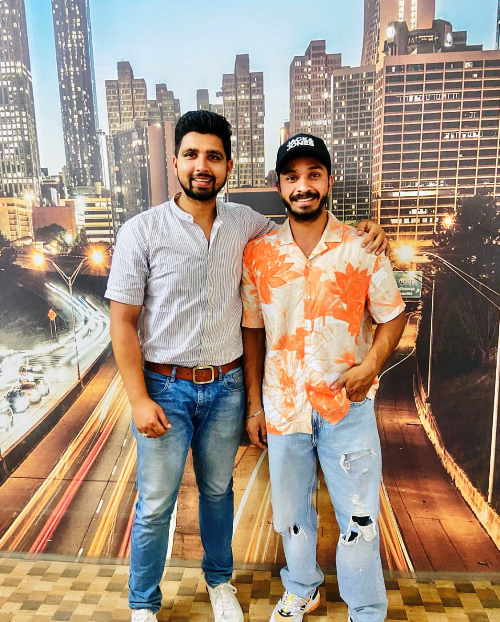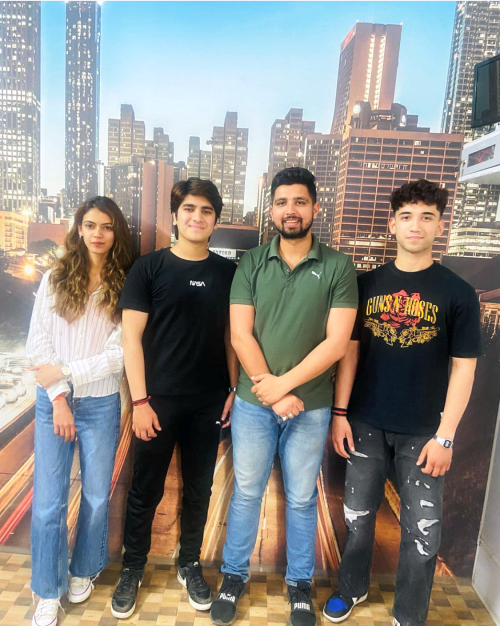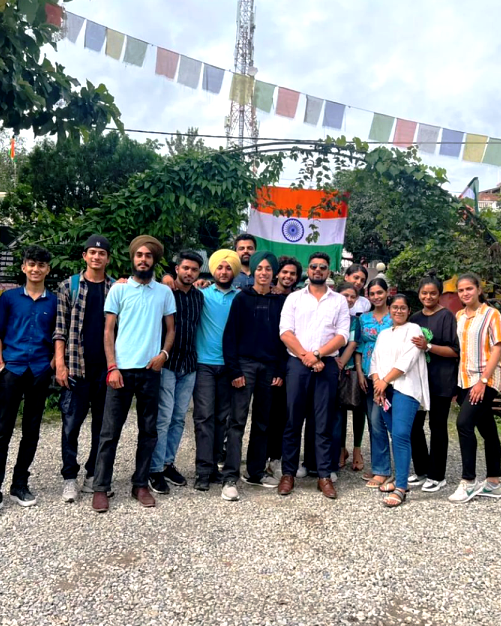Reading Passage 1:The secret of staying young
Questions 1-8: (Completing notes with ONE WORD ONLY)
[In this type of question, candidates are asked to write only one word/ no more than two words to complete a note on the given topic. For this type of question, first, skim the passage to find the keywords in the paragraph concerned with the answer, and then scan to find the exact word.]
Title: Ysabel Giraldo’s research
Question 1: Focused on a total of _________ different age groups of ants, analysing
Keywords for the question: focused, total, age groups, ants
The answer is in paragraph no. 3 in the very beginning in lines 1-2, “In the lab, P. dentata worker ants typically live for around 140 days. Giraldo focused on ants at four age ranges: 20 to 22 days, 45 to 47 days, 95 to 97 days and 120 to 122 days.”
So, the answer is: four / 4
Behaviour:
Question 2:
- how well ants looked after their ___________
Keywords for the question: how well, ants, looked, after
The answer is in the first line of paragraph no. 4, “Giraldo watched how well the ants took care of the young of the colony, .. . ..”
Here, took care = looked after
So, the answer is: young
Question 3:
- their ability to locate ___________ using a scent trail
Keywords for the question: ability, locate, using, scent trail,
The answer is found in lines 2-3 of paragraph no. 4, “.. ..She compared how well 20-day-old and 95-day-old ants followed the telltale scent that the insects usually leave to mark a trail to food.”
Here, mark = locate, how well = their ability,
So, the answer is: food
Question 4:
- the effect that _______ had on them
Keywords for the question: effect, had on them,
The answer can be found in lines 3-4 of paragraph no. 4, “She tested how ants responded to light . .. .”
Here, how ants responded = the effect ..…. had on them
So, the answer is: light
Question 5:
- how _________ they attacked prey
Keywords for the question: how, attacked, prey,
The answer is in the last lines of paragraph no. 4, “.. ..And when it came to reacting to prey, the older ants attacked the poor fruit fly just as aggressively as the young ones did, .. ….”
Here, attacked the poor fruit fly = attacked prey,
So, the answer is: aggressively
Brains:
Question 6:
- comparison between age and the ___________ of dying cells in the brains of ants
Keywords for the question: comparison, age and, dying cells, brains of ants,
Paragraph no. 5 talks about the research on ants’ brains. Here, in lines 1-3, the author says, “Then Giraldo compared the brains of 20-day-old and 95-day-old ants, identifying any cells that were close to death. She saw no major differences with age, nor was there any difference in the location of the dying cells, .. ..”
So, the comparison was between ants’ age and location.
So, the answer is: location
Question 7:
- condition of synaptic complexes (areas in which _______ meet) in the brain’s ‘mushroom bodies’
Keywords for the question: synaptic complexes, mushroom bodies,
The answer is found in lines 4-6 of paragraph no. 5. The author says here, “Ants and other insects have structures in their brains called mushroom bodies, which are important for processing information, learning and memory. She also wanted to see if ageing affects the density of synaptic complexes within these structures – regions where neurons come together.”
Here, synaptic complexes mean the region of ant’s brain where neurons come together or meet.
So, the answer is: neurons
Question 8:
- level of two ________ in the brain associated with ageing
Keywords for the question: level of two, associated with ageing,
The answer is in lines 7-9 where the author talks about two chemicals. “.. .What was more, the old ants didn’t experience any drop in the levels of either serotonin or dopamine – brain chemicals whose decline often coincides with ageing.”
Here, serotonin and dopamine are the two chemicals, coincides with ageing = associated with ageing,
So, the answer is: chemicals
Questions 9-13: In this type of question, candidates are asked to find out whether:
The statement in the question agrees with the information in the passage – TRUE
The statement in the question contradicts the information in the passage – FALSE
If there is no information on this – NOT GIVEN
[For this type of question, you can divide each statement into three independent pieces and make your way through with the answer.]
Question 9: Pheidole dentata ants are the only known animals which remain active for almost their whole lives.
Keywords for the question: Pheidole dentata, only known animals, remain active, almost, whole lives,
The answer lies in the first lines of paragraph no. 2, where the author mentions ‘naked mole rats’. “Naked mole rats can live for almost 30 years and stay fit for nearly their entire lives.”
So, Pheidole dentata ants are not the only known animals which remain active for almost their whole lives.
So, the answer is: FALSE
Question 10: Ysabel Giraldo was the first person to study Pheidole dentata ants using precise data about the insects’ ages.
Keywords for the question: first person, study, Pheidole dentata, using, precise data, ages,
The answer is in paragraph no. 3 in lines 2-4, “. … . ..Unlike all previous studies, which only estimated how old the ants were, her work tracked the ants from the time the pupae became adults, so she knew their exact ages.”
Unlike all previous studies means the research works done by previous scientists did not use data about insects’ age, and naturally Ysabel Giraldo was the first to do so.
So, the answer is: TRUE
Question 11: The ants in Giraldo’s experiments behaved as she had predicted that they would.
Keywords for the question: ants in Giraldo’s experiments, behaved, predicted, they would,
In paragraph no. 5, the answer lies in lines 6-7, “She also wanted to see if ageing affects the density of synaptic complexes within these structures – regions where neurons come together. Again, the answer was no.” Previously, in the same paragraph, lines 1-3 suggest that Giraldo wanted to identify any cells that were close to death but she saw no major differences with age.
This means the experiments did not show results as she expected.
So, the answer is: FALSE
Question 12: The recent studies of bees used different methods of measuring age-related decline.
Keywords for the question: recent studies, bees, different methods, measuring age-related decline,
In paragraph no. 6 we can see the reference of ‘bees’. But we do not find clear information on whether the recent studies of bees used several methods of measuring age-related decline.
So, the answer is: NOT GIVEN
Question 13: Pheidole dentata ants kept in laboratory conditions tend to live longer lives.
Keywords for the question: Pheidole dentata ants, kept in laboratory, live longer,
The answer is in paragraph no. 7. In the first lines the writer states, “Out in the wild, the ants probably don’t live for a full 140 days thanks to predator, disease and just being in an environment that’s much harsher than the comforts of the lab.”
These lines suggest that ants kept in laboratory conditions live longer than ants living in the wild.
So, the answer is: TRUE
Reading Passage 2:Why zoos are good
Questions 14-17 (Identifying information):
[This question asks you to find information from the passage and write the number of the paragraph (A, B, C or D … .. ) in the answer sheet. Now, if the question is given in the very first part of the question set, I’d request you not to answer them. It’s mainly because this question will not follow any sequence, and so it will surely kill your time. Rather, you should answer all the other questions first. And just like List of Headings, only read the first two lines or last two lines of the expected paragraph initially. If you find the answers, you need not read the middle part. If you don’t find answers yet, you can skim the middle part of the paragraph. Keywords will be a useful matter here.]
Question 14: a reference to how quickly animal species can die out
Keywords for this question: quickly, animal species, die out
The first few lines of paragraph B give us the answer, “Colossal numbers of species are becoming extinct across the world, and many more are increasingly threatened and therefore risk extinction. Moreover, some of these collapses have been sudden, dramatic and unexpected.”
So, the answer is: B
Question 15: reasons why it is preferable to study animals in captivity rather than in the wild
Keywords for this question: preferable, study animals, captivity, rather than, wild,
Again, lines 3-4 of paragraph E give us the answer to this question. The author says, “Being able to undertake research on animals in zoos where there is less risk and fewer variables means real changes can be effected on wild populations.”
Here, there is less risk and fewer variables = reasons why it is preferable
So, the answer is: E
Question 16: mention of two ways of learning about animals other than visiting them in zoos
Keywords for this question: two ways of learning, animals, other than visiting zoo,
The answer can be found in paragraph C. In lines 2-3, we find the first way, “… .. television documentaries are becoming ever more detailed and impressive,. .” whereas lines 3-4 give us the second way, “ . . .and many natural history specimens are on display in museums, . .. . .”
So, the two ways are television documentaries and natural history specimens.
So, the answer is: C
Question 17: reasons why animals in zoos may be healthier than those in the wild
Keywords for this question: animals in zoos, may be, healthier,
In paragraph A, lines 3-4 indicate us the answer to this question. “ . .. Animals in good zoos get a varied and high-quality diet with all the supplements required, and any illnesses they might have will be treated.”
So, the reasons are getting healthy diet and good treatment.
So, the answer is: A
Questions 18-22: In this type of question, candidates are asked to find out whether:
The statement in the question agrees with the information in the passage – TRUEThe statement in the question contradicts the information in the passage – FALSEIf there is no information on this – NOT GIVEN
[For this type of question, you can divide each statement into three independent pieces and make your way through with the answer.]
Question 18: An animal is likely to live longer in a zoo than in the wild.
Keywords for this question: likely to, live longer, zoo, than in the wild,
The first lines of paragraph A says, “…. it is perfectly possible for many species of animals living in zoos or wildlife parks to have a quality of life as high as, or higher than, in the wild.”
Here, a quality of life .. . . . higher than, in the wild = likely to live longer
So, the answer is: TRUE
Question 19: There are some species in zoos which can no longer be found in the wild.
Keywords for this question: some species, zoos, no longer be found, wild,
In paragraph B, look at line 6, “A good number of species only exist in captivity, . . .. .”
Here, only exist in captivity means that the animals cannot be found in the wild any more.
So, the answer is: TRUE
Question 20: Improvements in the quality of TV wildlife documentaries have resulted in increased numbers of zoo visitors.
Keywords for this question: improvements, quality of TV wildlife documentaries, resulted, increased, zoo visitors,
We find the mention of ‘TV wildlife documentaries’ in paragraph C in lines 2-3, “While it is true that television documentaries are becoming ever more detailed and impressive, . .. ..” But we do not find any statement about the results of TV documentaries.
So, the answer is: NOT GIVEN
Question 21: Zoos have always excelled at transmitting information about animals to the public.
Keywords for this question: zoos, always excelled, transmitting information, about animals,
In paragraph D, in lines 1-3, the author mentions, “. . ..there is also the education that can take place in zoos through signs, talks and presentations which directly communicate information to visitors about the animals they are seeing and their place in the world. This was an area where zoos used to be lacking. .. ”
The lines suggest that zoos have played a major part in transmitting information through signs, talks and presentations. But zoos had a lacking in it before. So, zoos did not always excel at transmitting information.
So, the answer is: FALSE
Question 22: Studying animals in zoos is less stressful for the animals than studying them in the wild.
Keywords for this question: studying animals, in zoos, less stressful, than studying, the wild,
Paragraph E talks about the role of zoos in research. But we do not find any information regarding stress in studying animals in the zoos or in the wild.
So, the answer is: NOT GIVEN
Questions 23-26: (Choosing the TWO best answers)
[In this type of question, candidates are asked TWO best possible answers for one question. Candidates need to write the correct LETTERS for the answers. Here, the techniques for Multiple Choice Questions are applicable.]
Question 23 & 24: Which TWO of the following are stated about zoo staff in the text?
Keywords for these questions: TWO, zoo staff,
In paragraph D, take a look at lines 5-7 carefully. “… .. Many zoos also work directly to educate conservation workers in other countries, or send their animal keepers abroad to contribute their knowledge and skills to those working in zoos and reserves, .. .. .”
Here, to educate conservation workers = teach people, send their animal keepers abroad = travel to overseas locations,
So, the answers are:
B (Some travel to overseas locations to join teams in zoos.)
D (Some teach people who are involved with conservation projects.)
Question 25 & 26: Which TWO of these beliefs about zoos does the writer mention in the text?
Keywords for these questions: TWO, beliefs,
The answer lies in lines 3-6 of paragraph F. Here, the writer says, “. . .They are vital not just in terms of protecting animals, but as a means of learning about them to aid those still in the wild, as well as educating and informing the general population about these animals and their world so that they can assist or at least accept the need to be more environmentally conscious.”
Here, protecting animals =raise animals which can later be released into the wild, more environmentally conscious = public awareness,
Other options talk about children overcoming their fear (A), employment opportunities (C) and income generation (D), which cannot be found.
So, the answers are:
B (They can increase public awareness of environmental issues.)
E (They can raise animals which can later be released into the wild.)
Reading Passage 3:The passage is without a title; about Marine debris or Ocean trash
Questions 27-33 (TRUE, FALSE, NOT GIVEN)
In this type of question, candidates are asked to find out whether:
The statement in the question agrees with the information in the passage – TRUE
The statement in the question contradicts the information in the passage – FALSE
If there is no information on this – NOT GIVEN
[For this type of question, you can divide each statement into three independent pieces and make your way through with the answer.]
Question 27: Rochman and her colleagues were the first people to research the problem of marine debris.
Keywords for this question: first people, research, problem, marine debris,
The answer can be found tracing lines 3-4 of paragraph no. 2. The writer says here, “… . Plenty of studies have sounded alarm bells about the state of marine debris; . .. ..”
This means scientists before Chelsea Rochman and her team have already alarmed the world about the problems of marine debris.
So, the answer is: FALSE
Question 28: The creatures most in danger from ocean trash are certain seabirds.
Keywords for this question: most in danger, ocean trash, certain seabirds,
We find the mention of ‘seabirds’ in paragraph no. 3 in line no. 2 as an example of what a study on marine debris could show. But we cannot find any such information which shows us of the most affected creatures.
So, the answer is: NOT GIVEN
Question 29: The studies Rochman has reviewed have already proved that populations of some birds will soon become extinct.
Keywords for this question: studies, Rochman, already proved, populations, birds, will, soon, extinct,
In lines 2-4 of paragraph no. 3, the author states, “…. . . For example, a study could show that certain seabirds eat plastic bags, and go on to warn that whole bird populations are at risk of dying out. ‘But the truth was that nobody had yet tested those perceived threats,’ Rochman says. ‘There wasn’t a lot of information’.”
Here, the lines suggest that there wasn’t enough information to prove that populations of some birds would become extinct.
So, the answer is: FALSE
Question 30: Rochman analysed papers on the different kinds of danger caused by ocean trash.
Keywords for this question: analysed, papers, danger, ocean trash,
The answer lies in paragraph no. 4, “Rochman and her colleagues examined more than a hundred papers on the impacts of marine debris that were published through 2013. Within each paper, they asked what threats scientists had studied – 366 perceived threats in all. .. . . .”
These lines suggest that Rochman analysed 100+ papers on different angles of problems caused by ocean trash (marine debris).
So, the answer is: TRUE
Question 31: Most of the research analysed by Rochman and her colleagues was badly designed.
Keywords for this question: most of, research, badly, designed,
In paragraph no. 4, we have found that Rochman analysed 100+ papers. Then in paragraph no. 5 the writer states, “In 83 percent of cases, the perceived dangers of ocean trash were proven true. In the remaining cases, the working group found the studies had weaknesses in design and content which affected the validity of their conclusions – they lacked a control group, for example, or used faulty statistics.”
These lines indicate that 83 cases out of 100+ cases proved to be correct. IN the remaining cases there were faults.
So, the answer is: FALSE
Question 32: One study examined by Rochman was expecting to find that mussels were harmed by eating plastic.
Keywords for this question: expecting, find, mussels, harmed by eating plastic,
The answer for this question can be found in paragraph no. 6 in the beginning. “Strikingly, Rochman says, only one well-designed study failed to find the effect it was looking for, an investigation of mussels ingesting microscopic plastic bits. The plastic moved from the mussels’ stomachs to their bloodstreams, scientists found, and stayed there for weeks – but did not seem to stress out the shellfish.”
Here, the lines suggest that Rochman was hoping to find that mussels were getting affected by taking plastic but the study showed that its plastic did not stress (harm) the shellfish (mussels).
So, the answer is: TRUE
Question 33: Some mussels choose to eat plastic in preference to their natural diet.
Keywords for this question: mussels, choose to eat, plastic, preference, natural diet,
There is no such information that shows that some mussels take plastic as a choice of their regular food.
So, the answer is: NOT GIVEN
Questions 34-39: (Completing notes with ONE WORD ONLY)
[In this type of question, candidates are asked to write only one word/ no more than two words to complete a note on the given topic. For this type of question, first, skim the passage to find the keywords in the paragraph concerned with the answer, and then scan to find the exact word.]
Title: Findings related to marine debris
Studies of marine debris found the biggest threats were:
- plastic (not metal or wood)
Question 34: bits of debris that were __________ (harmful to animals)
Keywords for this question: bits of debris, harmful to animals,
We find the mention of ‘metal or wood’ and ‘animals’ in paragraph no. 8. Here, lines 2-3 says, “.. . Most of the dangers also involved large pieces of debris – animals getting entangled in trash, for example, or eating it and severely injuring themselves.”
Here, bits of debris = pieces of debris,
So, the answer is: large
Question 35: There was little research into ___________ e.g. from synthetic fibres.
Keywords for this question: little research, synthetic fibres,
The answer is in paragraph no. 9 in the opening. “But a lot of ocean debris is ‘microplastic’, or pieces smaller than five millimetres. These may be ingredients used in cosmetics and toiletries, fibres shed by synthetic clothing in the wash, or eroded. .. . . . .. . .. . . . Rochman’s group found little research on the effects of these tiny bits. . . .”
So, little research was done on microplastic.
So, the answer is: microplastic
Drawbacks of the studies examined:
Question 36: most of them focused on individual animals, not entire ____________
Keywords for this question: most of, focused, individual animals, not entire,
The answer is in lines 2-3 of paragraph no. 10. “.. . . . Many studies have looked at how plastic affects an individual animal, or that animal’s tissues or cells, rather than whole populations.”
So, the answer is: populations
Question 37: the __________ of plastic used in the lab did not always reflect those in the ocean
Keywords for this question: plastic, used in the lab, did not, always, reflect, ocean,
In lines 3-4 of paragraph no. 10, the writer mentions, “……. . And in the lab, scientists often use higher concentrations of plastic than what is really in the ocean.”
Here, did not always reflect those in the ocean = than what’s really in the ocean
So, the answer is: concentrations
- there was insufficient information on
- numbers of animals which could be affected
Question 38: the impact of a reduction in numbers on the __________ of that species
Keywords for this question: reduction in numbers, species,
In the last lines of paragraph no. 10, the author says, “. . .. – or how deaths in one species could affect that animal’s predators, or the rest of the ecosystem.”
Here, deaths in one species = reduction in numbers
So, the answer is: predators
- the impact on the ecosystem
Question 39: Rochman says more information is needed on the possible impact of future __________ (e.g., involving oil)
Keywords for this question: possible impact, future, involving oil,
The first lines of paragraph no. 11 give us the answer. “ ‘We need to be asking more ecologically relevant questions,’ Rochman say, Usually, scientists don’t know exactly how disasters such as a tanker accidentally spilling its whole cargo of oil and polluting huge areas of the ocean will affect the environment until after they’ve happened. ”
Here, affect = impact
So, the answer is: disasters
Question 40: Choosing the title
[This type of question asks you to choose a suitable title for the whole passage from three or four options. Generally, this question is found as the last question so you should not worry much about it. Finding all the answers for previous questions gives you a good idea about the title.]
What would be the best title for this passage?
A. Assessing the threat of marine debris
B. Marine debris: who is to blame?
C. A new solution to the problem of marine debris
D. Marine debris: the need for international action
Here, we must make decision on which title goes best with the passage. Our reading of the passage for the questions 27-39 clearly indicates that the passage is about the research and its results and further suggestions on evaluating or assessing the threats of ocean trash or marine debris.
So, the answer is: A








